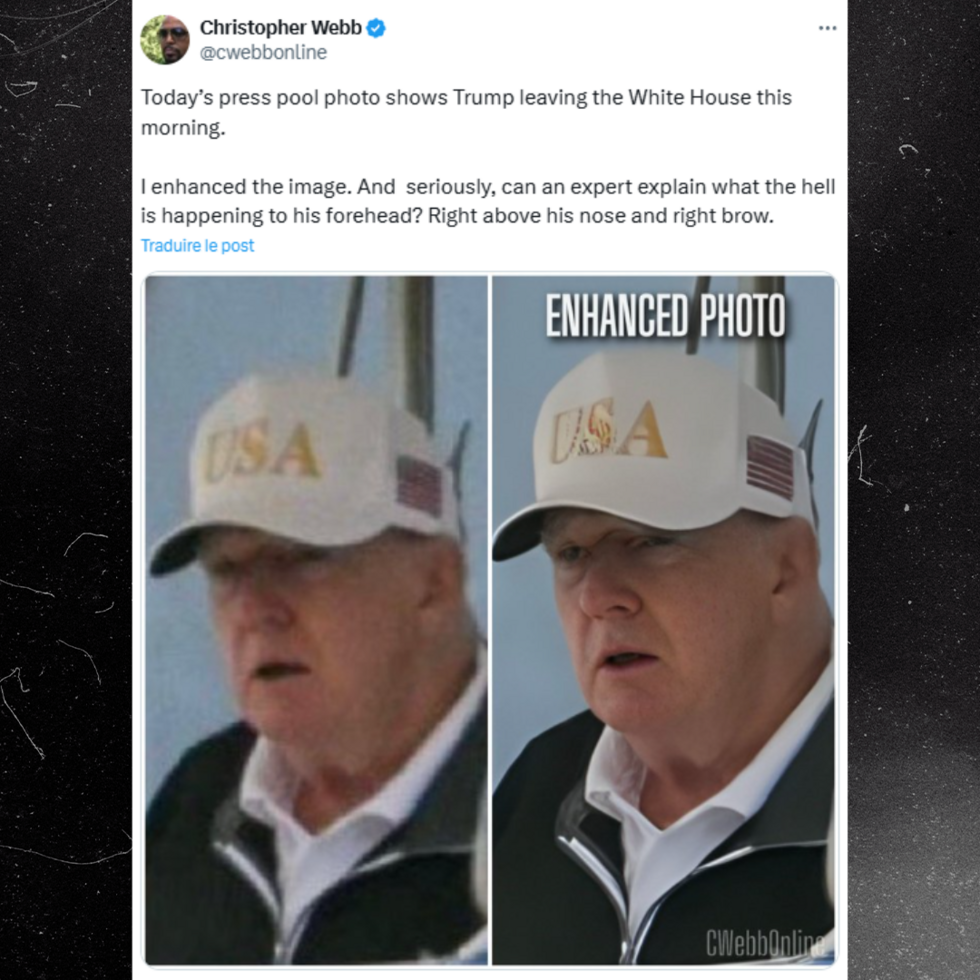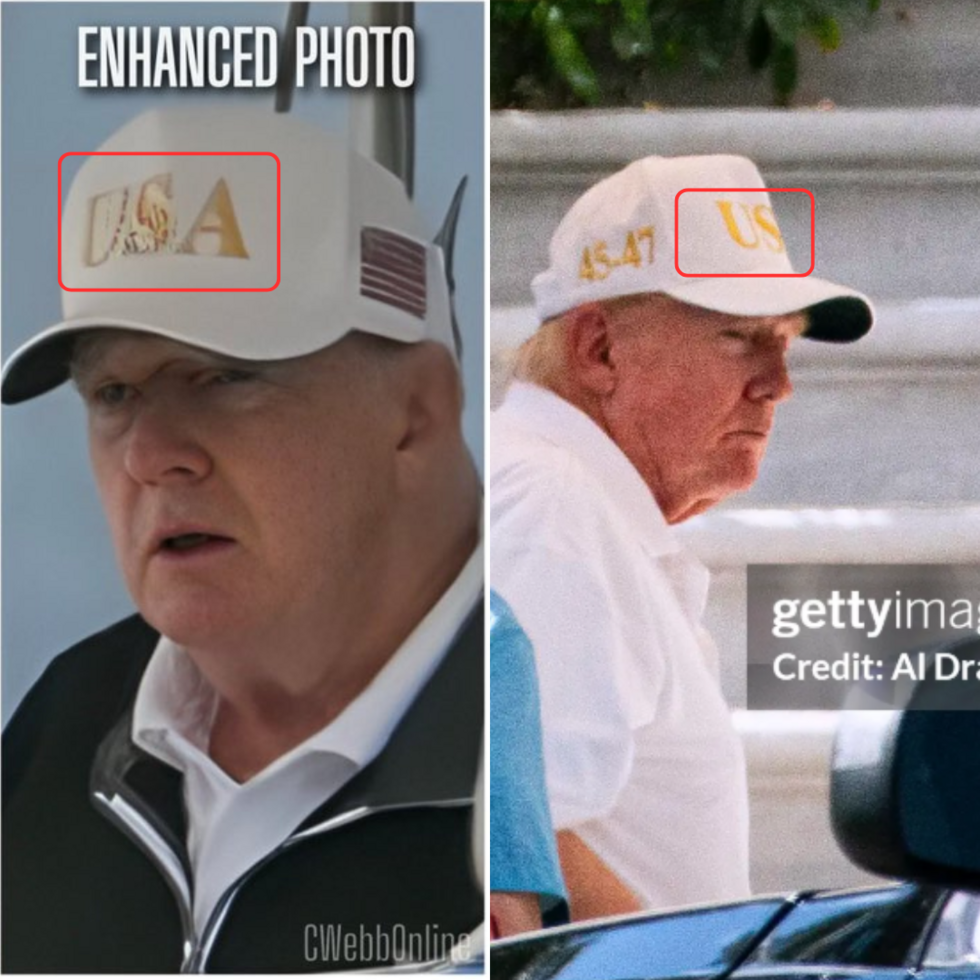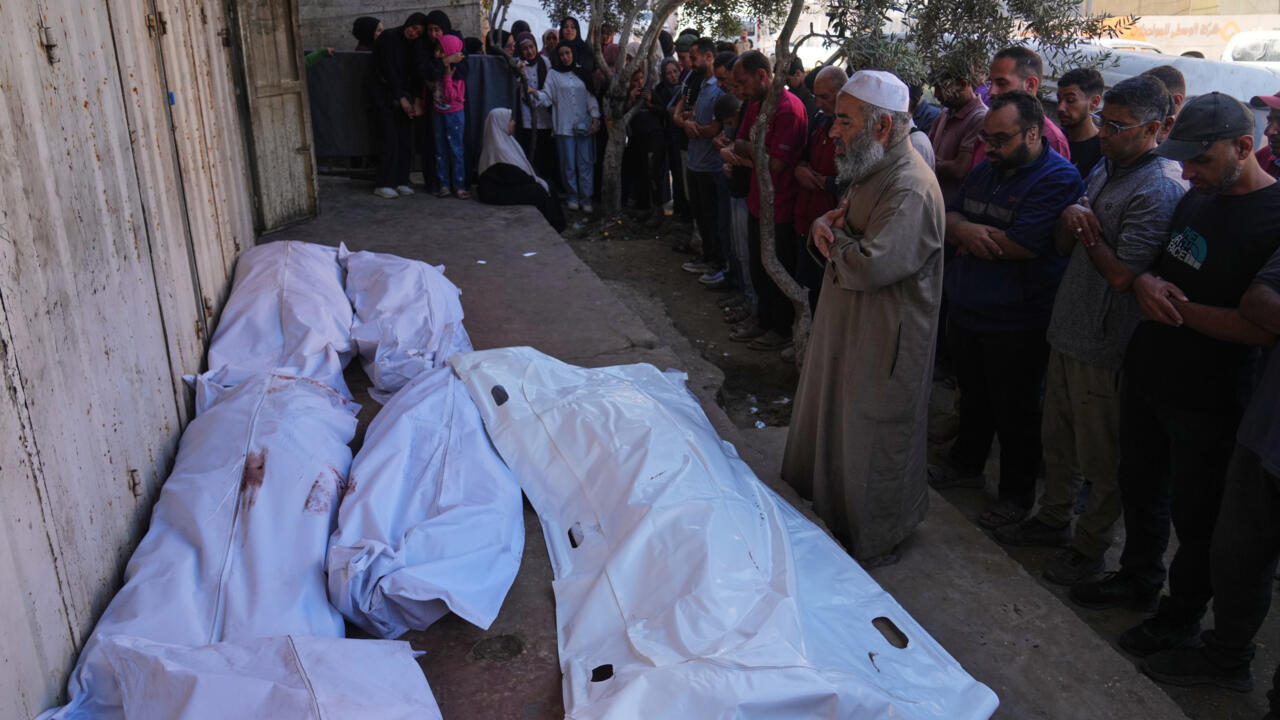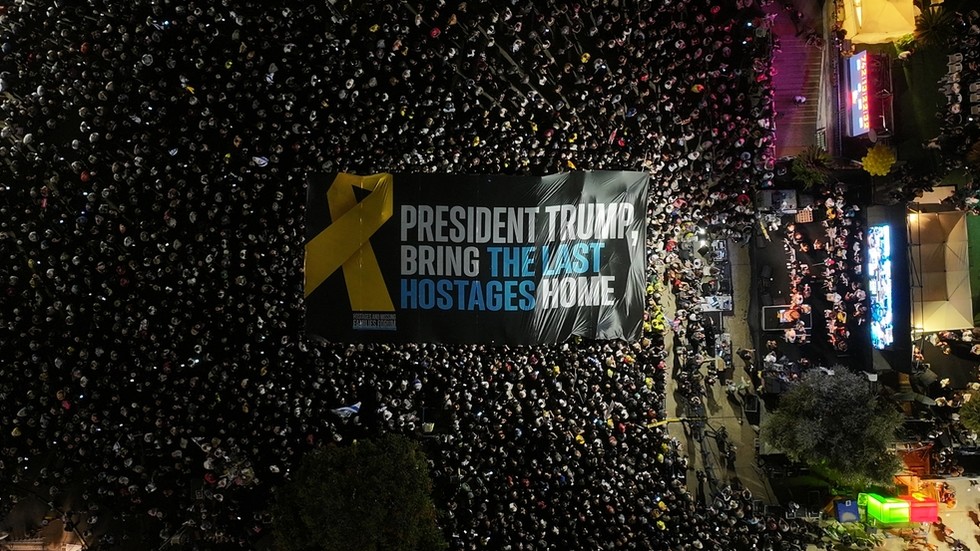"What the hell is happening to his forehead??” On September 1, Christopher Webb, a Californian internet user with 130,000 followers on X, posted a photo described as “enhanced” of US President Donald Trump showing him with distorted features.
After not appearing in public for several days, the US president was photographed on September 1 as he left the White House. Using a blurry, poor-quality photo of the US president taken that day, Webb explained that he had “enhanced” the image, most likely with an AI tool, to better distinguish Trump's features.
The result of this method, known as "upscaling", which involves increasing the resolution of an image or video, is that the politician now appears to have his right eye almost closed and a new deformity on his forehead.

An image enhancement that 'went wrong’
Many internet users immediately reposted this “enhanced” image to claim that the American president had health problems. “He's clearly not well. And they're trying everything they can to hide it,” said the French-language Facebook account Jonathan le Prof, which describes itself as an educational account.
But this “enhanced” photo does not actually show Trump's real face. On X, several journalists specialising in fact-checking – such as BBC journalist Shayan Sardarizadeh – pointed to an AI enhancement of the image that “went wrong”.
Sardarizadeh also noted that the AI tool used, which the Californian internet user did not specify, had also altered the president's cap. Other photos of the US president taken in recent days show that the cap does not resemble the one visible in the “enhanced” photo, nor do they appear to show such a transformation of his face.

Upscaling tools are more or less effective at reproducing a face
How was such an “enhanced” photo produced? Webb, who created the “enhanced” photo, explained on X that he zoomed in on the photo taken on September 1, then used an AI tool to “enhance” the image.
These photo “enhancements” vary greatly depending on the quality of the AI tools used.
“There are many different tools for what is known as upscaling, i.e. increasing the quality and resolution of an image using AI,” Ari Kouts, an innovation and AI consultant told the FRANCE 24 Observers team.
Some may have difficulty reproducing certain landscapes and objects, but also and above all, faces. “Some will be very good at rendering human skin, for example, for creating humans, while others will be more general,” Kouts said.
The quality of the original photo also plays a major role. In this specific case, Kouts says that the poor-quality photo of Trump provided little detail about his face: “The photo is compressed and shows very smooth skin. So it's clear that if the details don't exist in the original image, the upscaling tool will have to reinvent them. Overall, the problem with these tools is that they inevitably have to invent, or at least recreate, details that were or were not there.”
Kouts attempted to further “improve” the image using Google's free Nano Banana version.
His “improvement”, the creation process of which is detailed here in an exchange with Google's Gemini AI assistant, seems closer to reality, even though it too was produced by AI.
To display this content from X (Twitter), you must enable advertisement tracking and audience measurement.
Photo upscaling, a popular process
These upscaling practices are not new. In 2020, an “enhanced” pixelated photo of Barack Obama showed the face of a White man who bore no resemblance to the former US president.
Since then, this method has undergone significant improvements and is now offered by many image editing tools, including Canva and Photoshop. The Pixel Pro 10 has also been available on the market since the end of August. This new Google phone has a camera capable of 100x zoom, thanks to the upscaling method.
To display this content from X (Twitter), you must enable advertisement tracking and audience measurement.
“Google offers a model that is very good at recreating buildings or nature, but it's very bad at recreating writing or faces because it's not designed for that,” Kouts told our team.
The principle is the same every time: “What you get is a fake image, a recreated image,” Kouts said. “That doesn't mean it can't be almost true or almost realistic. And that's what's so powerful about it. When you see it on plants, for example, or on animals or buildings, you'll see the real image, which will be almost perfect compared to what you would have had.”
Rumours about Trump's health
Trump is currently facing a maelstrom of rumours about his health. His absence from the media spotlight for a few days at the end of August fuelled online misinformation, with many online accounts even claiming that the US president was “dead”.
“NEVER FELT BETTER IN MY LIFE,” he replied on August 31, 2025, on his social media platform Truth Social.
At the end of August, bruises on his hands visible in photos had already raised many questions. White House physician Sean Barbabella explained in a letter that the bruises were “consistent with minor soft tissue irritation” and could be related to “frequent handshaking and the use of aspirin, which is taken as part of a standard cardiovascular prevention regimen”. This observation was also reported by several doctors interviewed by fact-checking services, including the French media outlet 20 Minutes.











 English (US) ·
English (US) ·